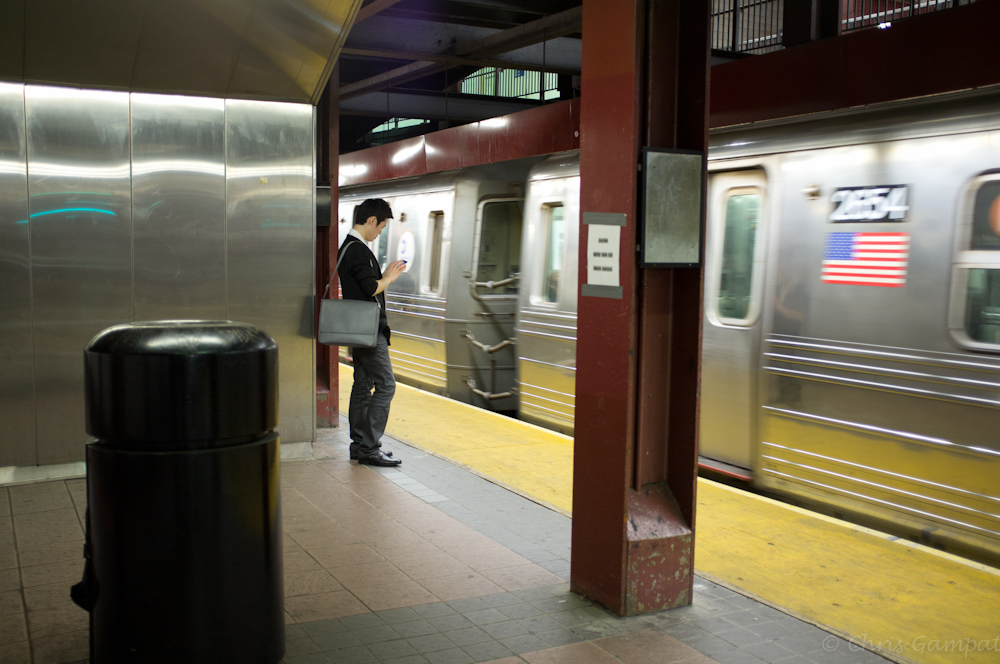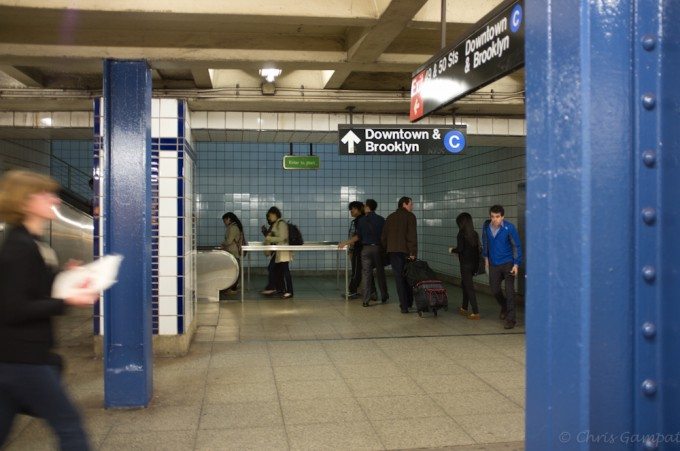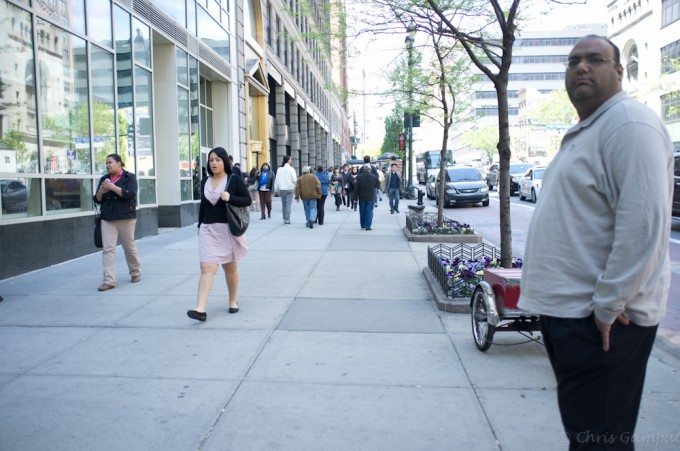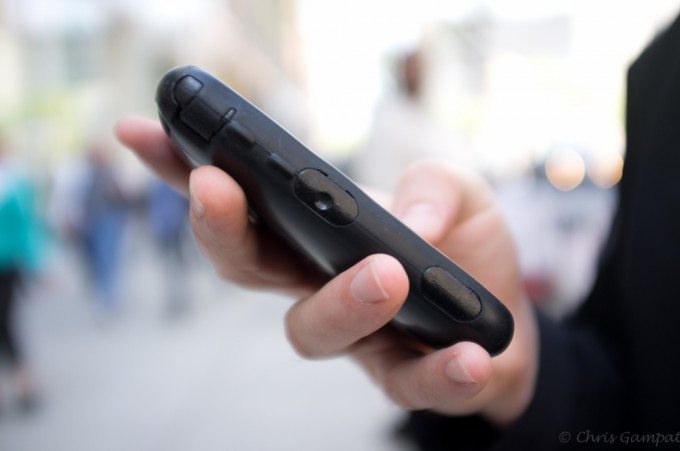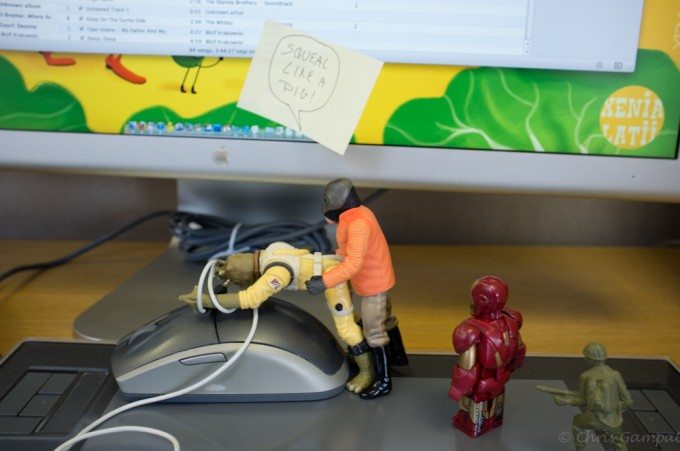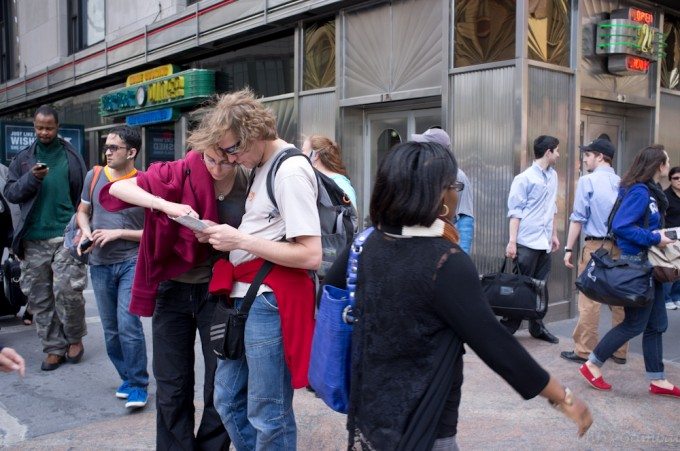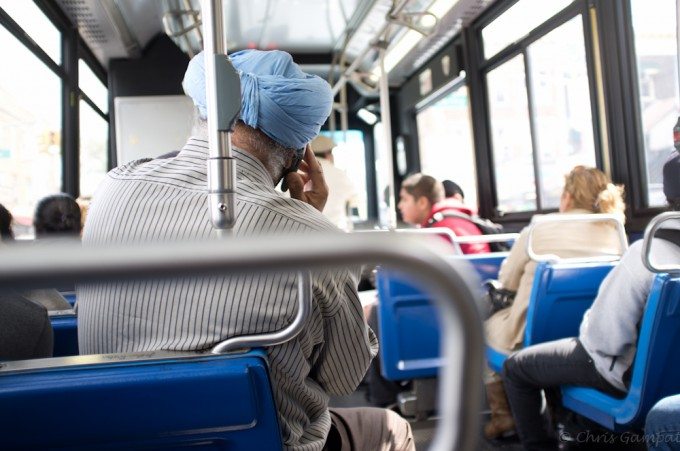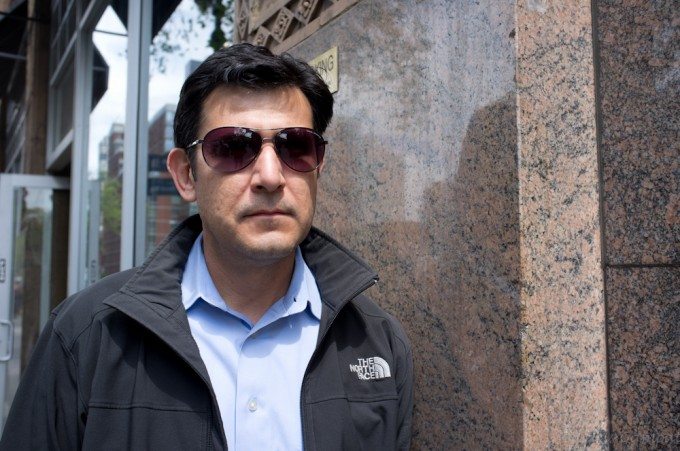Last Updated on 05/15/2011 by Sander-Martijn
Last night I took the Fuji X100 with me to a small celebration for Cinco De Mayo with co-workers and today I used it for a bit of street photography. Yesterday, I stated that the camera had a slew of problems: especially the metering. The day before that, I compared it to the Olympus EP-2 and was just getting a feel for it. Today, I’m going to address some of the problems a bit more.
Film Modes
I’ve talked a little bit about the Fuji X100’s film modes already but here’s a comparison in two different sets of images. All of these images were taken with the film simulation bracketing mode that the camera features. Click the images to compare and contrast.
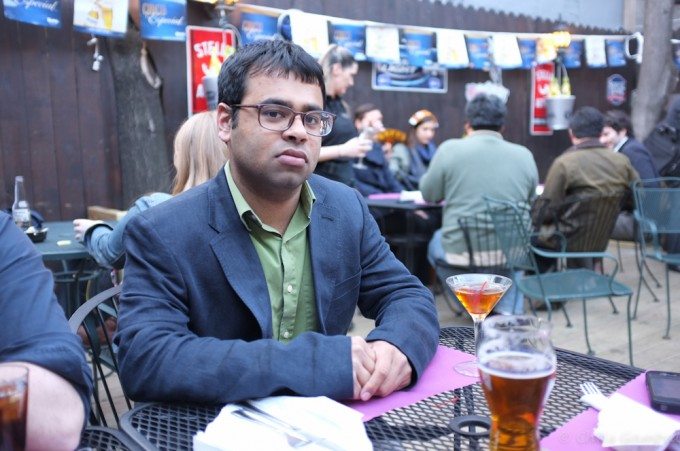
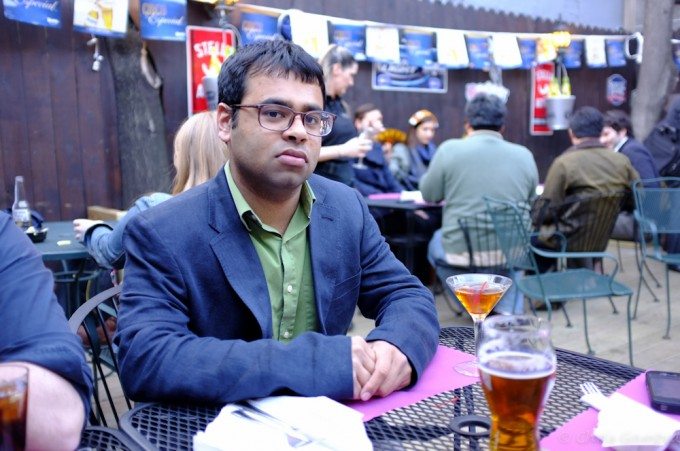

As you can see, there is a clear difference between the three. Velvia is super vivid (especially in my jacket), Provia is very muted, and Astia is a middle ground between the three. Here are another three photos for you to compare and contrast.
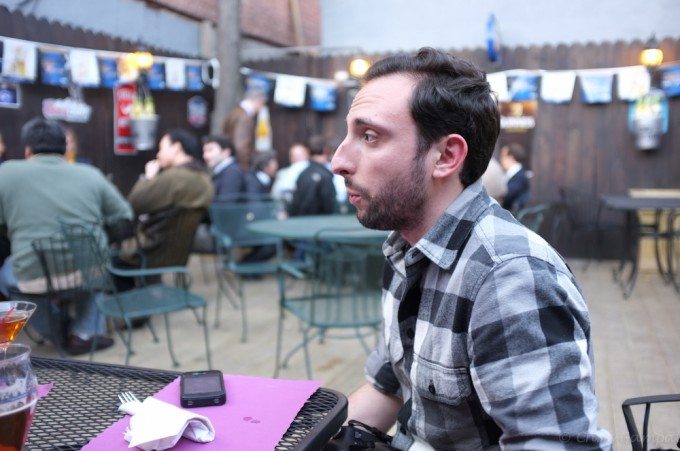

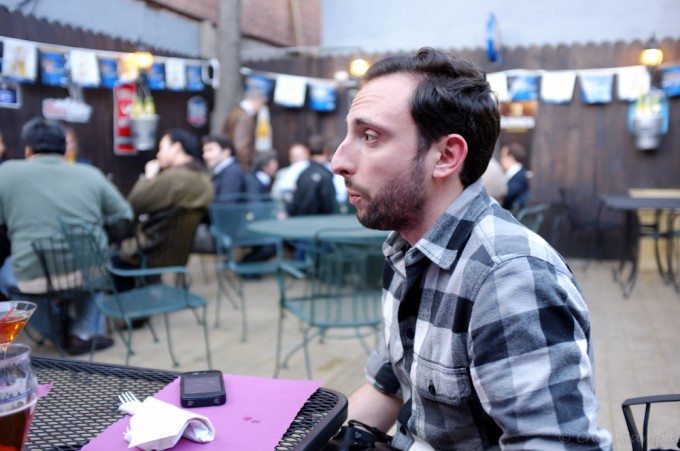
My favorite is probably Astia because I like shooting photos of people, and it seem to be the best for portraits.
Metering
Yesterday I ripped the metering on this camera apart, and I’m going to stick to it. To explain myself a bit more, what I often have been doing so far is shooting the camera at ISO 200 or 400 and keeping the lens wide open with exposure compensation not turned on and with the shutter set to automatic—basically I’m in aperture priority. I’ve experimented with the different metering modes as well. Part of the problem is the fact that in Aperture priority, the camera won’t go above 1/1000th of a second. A workaround is to set the camera to auto ISO but even then it can still be problematic.
You can set the camera to full program as well, but I don’t like doing that because I want better control over my images. This way I can create an even better one in the post-production process.
I’ve learned to just shoot in full manual mode and before I enter an area with changing light, to just meter off of the palm of my hand. Because of this, the camera is often overexposing my images a bit.
All of this goes hand in hand with the fact that I’m not pretty much just disregarding the camera’s meter now. Instead, I’m relying on my own knowledge of light and photography. This isn’t a bad thing at all: it’s forcing me to make more careful judgments and slow down a bit. But something that I’ve done with the information display is helping me out quite a bit.
Viewfinder Overlay
To be honest, the Viewfinder of the Fuji X100 is a true godsend. I’ve been able to overlay so much information in it that I almost never want the optical viewfinder to go away. I understand that if I want to manually focus then I’ll need to force it away.
Here’s how the viewfinder helps me:
– I set up the rule of thirds guideline to help me focus and then recompose.
– The meter is on the left that I barely pay attention to.
– On the bottom left hand corner of the screen I’ve overlayed the histogram, which I’m paying attention to more than the meter. Ideally, this is what you want to do anyway.
– On the top right is the battery life meter.
– On the bottom is the distance/focusing meter.
– In the middle is a level meter telling me whether or not the camera is straight.
And there is so much more in there, it’s really quite awesome. DSLR manufacturers should take a hint from Fujifilm about how to do viewfinders.
Oh and Leica, I <3 you and all but I’m pointing the finger at you too! But for Christ’s sake please don’t make me sell my kidney to have to afford that. As it is, I believe that the Fuji X100 is overpriced.
Bokeh (and Image Quality) in Macro Mode
Whoa, look at that soft bokeh. I’ve heard a couple of things around the interwebs about the bokeh not being so pleasing. I have to disagree. Perhaps it’s the lens’s strongest point.
The only problem is that the bokeh is only there when wide open. When stopped down to F/5.6 it’s not there anymore. In the case of capturing the office shenanigan above, it’s all good.
About that 35mm Equivalent
35mm is perhaps the best focal length for a camera like this and Fujifilm made a great decision with it. Because the camera is so small and there are no parts at all that jut out and draw attention to itself, it will allow you to get up close and personal with your subjects for more intimate photos.
What I am disappointed with is the fact that I believe that the lens could have been sharper wide open. I almost feel as if this camera was designed to be shot wide open. To be honest, I prefer to shoot my street photography wide open.
My photojournalism is another story.
And so are my portraits. At F/5.6, the lens is pretty damned sharp. Granted though, I’ve seen better.
You can purchase the Fujifilm X100 from B&H Photo. Please also consider making purchases from Amazon by clicking the links as they help to support this site.
Please Support The Phoblographer
We love to bring you guys the latest and greatest news and gear related stuff. However, we can’t keep doing that unless we have your continued support. If you would like to purchase any of the items mentioned, please do so by clicking our links first and then purchasing the items as we then get a small portion of the sale to help run the website.


